“Take the hotwire fence around that area of tall grass,” I told Darrin and Steff. They would be in charge of the 550 head of finish beeves in two days when the cattle were herded from the north side of the ranch. They would be brought on hoof, herded again by riders on horseback, trailing in a long thin line along the county road, cross the county road bridge over the river to arrive on the south side of Alderspring, just above the wilderness of the Pahsimeroi River bottoms. We wouldn’t be grazing that; we leave the riverbanks and thick habitats of willows and grasslands for the elk, moose, and deer that range there (and even for the mountain lions that wander with them). But just above, on the drier volcanic rock bars along the river, we had hay meadows and pasture lands.
Their two young boys bumped along with us in the back seat of the carryall. Riley, the younger one asked “Why won’t we graze in that tall grass, Mr. Glenn?”
“It’s because it is all Great Basin Wildrye.” I looked at him in the rearview mirror. “It was the grass that I believe covered the valley before it was settled in the middle 1870s. We’re trying to recreate a small piece of it back.” I launched into one of my ecological talks, unable to help myself even when not sure how interested my companions are in my discourse. I described how this beautiful native grass can’t handle continuous grazing of any kind and will quickly decline with lack of rest. The six to eight foot tall majestic bunch grass that covered entire valleys of the Intermountain West from Nevada to Idaho would find a rapid end in the late 1800s from grazing by domestic livestock.
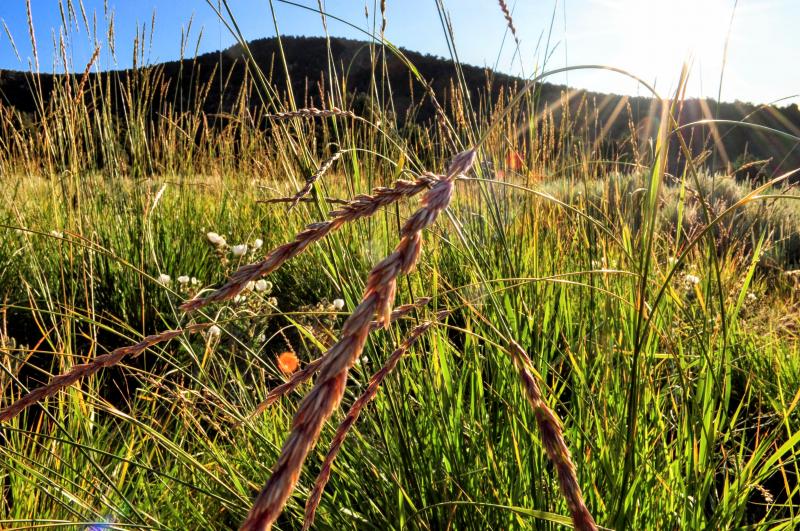
Buffalo were infrequent visitors pre-settlement. Certainly, there were thousands of them, even hundreds of thousands, in some herds, but their complete consumption and trampling incidents were infrequent, random and separated by usually long rest periods. Wildrye thrived despite the occasional decimation.
On Alderspring, so far, our recovery efforts were working. It was only a couple of acres, but occasionally I go down there, kneel, and get lost in my mind’s eye of what it must have looked like. Golden stems with thick, wheatlike heads rustle in the breeze far above me against the azure blue sky.
I picture horses and covered wagons riding, bumping through the bunchgrasses, man with flat-topped brimmed and dusty hat, woman in white and slightly earth-browned bonnet beside him, kids leaning from behind inside the canvas wagon watching the endless grass mesmerizingly disappear under their harnessed team’s feet and under wagon wheel as they rolled through it.
Horses would happily tear off great mouthfuls of the abundant grass. It was sweet, the heads were doughy, and it was always in front of them.
The man with worn and oiled leather lines in calloused and tanned hand would quietly say “Whoa,” as he gave gentle pressure on the soft dressed cowhide. The horses would contentedly stop, grazing despite their snaffle bits as the teamster husband looped the slack lines over the frontrail. The man and the woman would stand up on the floorboard, together, hands clasping, silent, in awe of what was before them: endless swells of tall grass, coursing in the wind. They’d stand on the wagon so they could see, and watch the golden crop of wildrye, the long stems bending, yielding, in undulating waves as the persistent mountain valley breeze coerced them into action.
They had found what they were looking for.
The year: 1874. Settlers had just started finding the deep waves of tall grass in the Pahsimeroi. And for this man and his wife they’d found home. They knew the high valley would likely be poor for growing crops with its short growing season. After all, there was still snow in those mountains in July. But the nearby boom mining towns of Salmon City, Challis, Bonanza, and Custer had demand for what crops couldn’t provide: beef.
What they didn’t know was that the tall grass, and even the shorter grasses in the mountains would quickly be played out by the mode of harvest the pioneers introduced: continuous grazing. There were no barbed wire fences, no stonewalls, and definitely no electric fence. There were only men and their horses, and they would end up only moving cattle to more grass when the forage petered out. But unlike the buffalo, or bison, they would come back year after year.
And the death sentence was complete.
One neighbor told me there were probably up to 50,000 cattle and as much as 100,000 of sheep (both of those numbers are just the mothers–no calves or lambs). Now there is about 12,000 cattle in our valley and no sheep (well, except for the little Alderspring flock).
And by 1888, grass was so used up, and cattle so plentiful, that when winter dealt a rough hand over much of the northern Rocky Mountain west, more than half of the cattle perished. In the Pahsimeroi Valley alone, as much as 15,000 head froze to death, the abundant grasslands that once provided winter feed and thermal cover now gone.
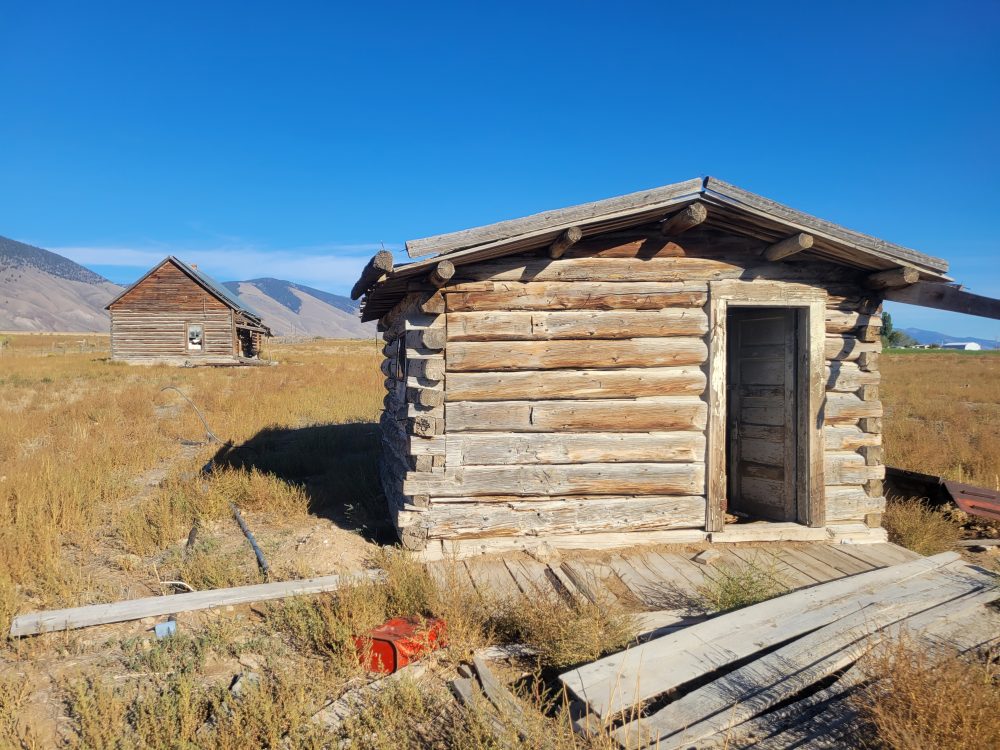
Many ranchers simply abandoned ship in that year. Some headed for California and Oregon. Some laid claim to water, starting in Idaho in 1873. The earliest irrigation rights in the Pahsimeroi are 1885, one of which is on Alderspring. My guess is that the grass had already played out for them, and so, they started spreading water from rivers and streams over the land to make the now-desert bloom once again, this time, with introduced pasture grasses such as orchardgrass, timothy, smooth brome and Kentucky bluegrass.
The others who didn’t get in on the early claiming of water left cabin and corrals empty, abandoned in a grazing boom gone bust. It was the 1800s equivalent to leaving the house keys on the table when the mortgage they had borrowed against–the land–turned upside down. It’s why, even today, when you drive across the windswept sagebrush prairies of the desolate west, you’ll find shells of log homesteads or soddies; fences rotting to the ground, gray logs slowly sinking into the dirt. I used to wonder why anyone would have settled there.
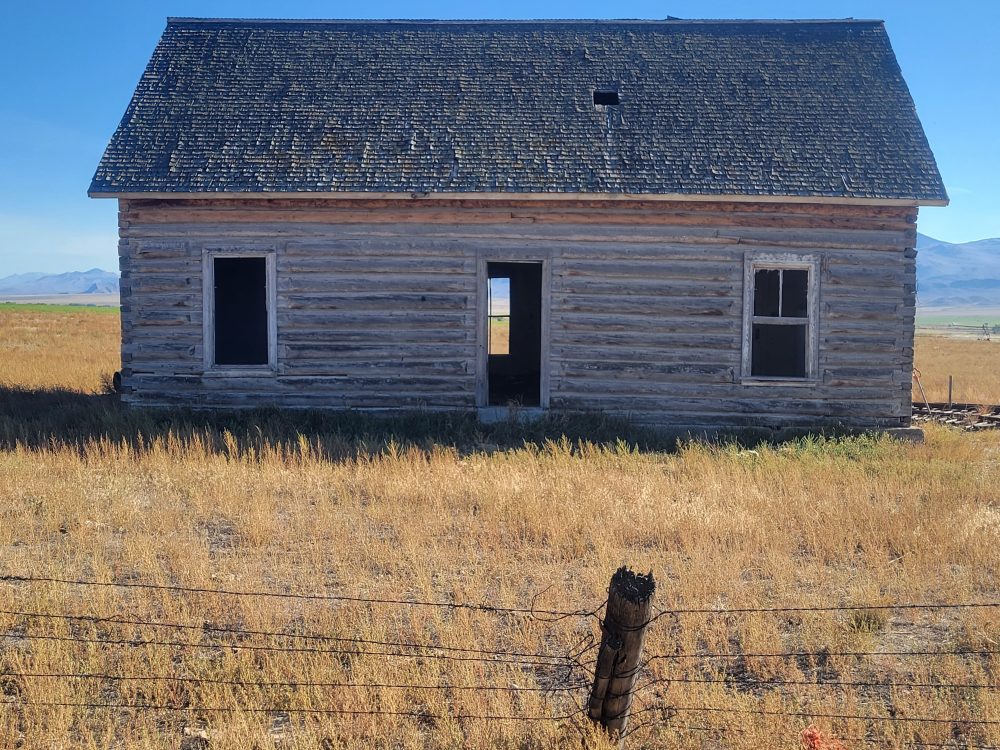
But now, I realize that they didn’t settle there, at least the way it is today. It was a different place then. It was Eden to the prairie schooner captain and his family when they made beachhead at what looked like a grazier’s dream: tall grass that never seemed to end. They simply put claim to these tall grass prairies, thinking the green wave would always be there. But what they were missing was a short lesson in plant physiology.
It’s about the height of growing points-the actively dividing plant leaf and seedhead producing center of what is called meristematic tissue. Mature basin wildrye has them as much as 6 inches above the ground–and grazers eat it. And when that’s gone, the plant relies entirely on roots to grow it back. And if it happens time and time again, the plant dies. The plant has borrowed against its own equity of root reserves and like the settler whose cattle graze it, finds itself upside down. It’s not sustainable.
And a prairie legacy disappears.
But despair not, dear reader. There’s a secret treasure hidden just below the surface of the soil. One day, last summer, we discovered it, quite by accident. Melanie, Linnaea, and I were riding horseback after some stray cattle, picking our way across the steep hillside of fire-scarred hillside high in the Big Hat Country last summer. It was nearly burned to the ground–to the mineral soil, and only black rocks and the skeletons of sage remained. That was until we came over a small ridge and were suddenly met with a riot of green and gold. Melanie pulled up her gray gelding, Gatto, turning to me, and said what I was thinking: “Is this all basin wildrye, Dad?”
All the sagebrush along this edge of the Douglas-fir forest had burned. And now, there was an incredible stand of Great Basin wildrye seedlings rising up, now 4 or 5 feet high. None of us remembered seeing the plants there before the burn in 2018. And we just sat there, stunned, and stopped in saddle. The horses grazed the green and lush goodness; they recognized it. It took a few minutes to realize where all these seedlings had come from:
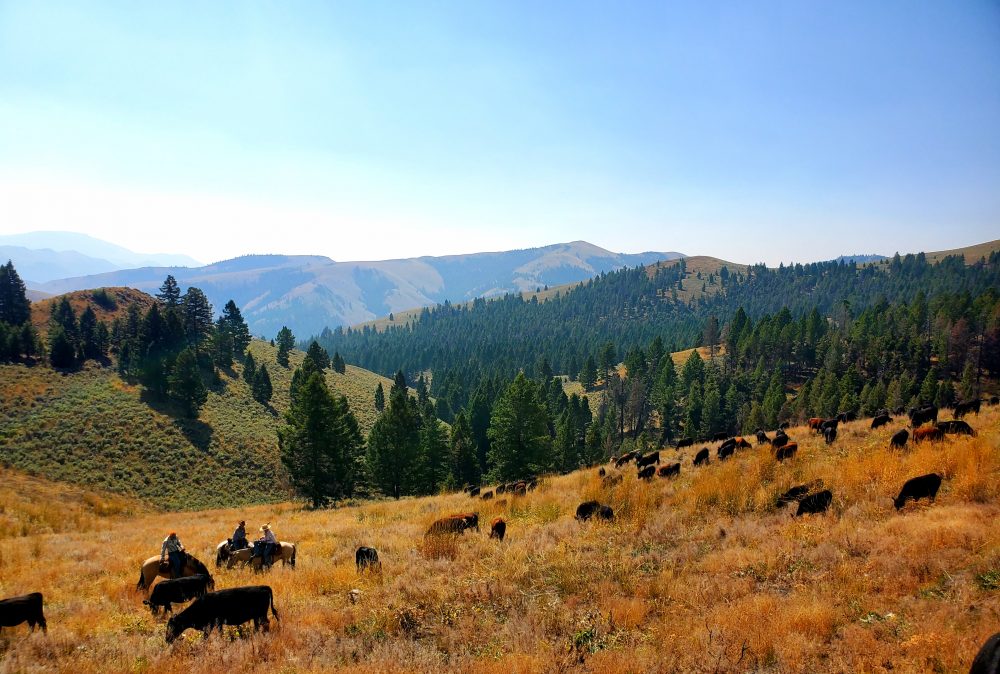
Seed.
Seed that had been waiting for decades, probably even a century. Basin wildrye’s large wheat berry sized seeds were big enough to survive all those years from parent plants that lived in a time before wholesale cattle grazing covered the mountainsides. The seeds sat waiting, in volcanic soil, like ancient grain seeds found in the tombs of long dead pyramid buried pharaohs, ready to germinate when given the right conditions of fire, soil and water.
They were still there. They were time capsules. The heavy seeds couldn’t have traveled there by wind; and there were far too many seedings to have been deposited by wildlife. The only way the concentration of grass starts could be explained was that they fell right there in that very spot, dropped by a parent plant, waving in an autumn breeze, a century before.
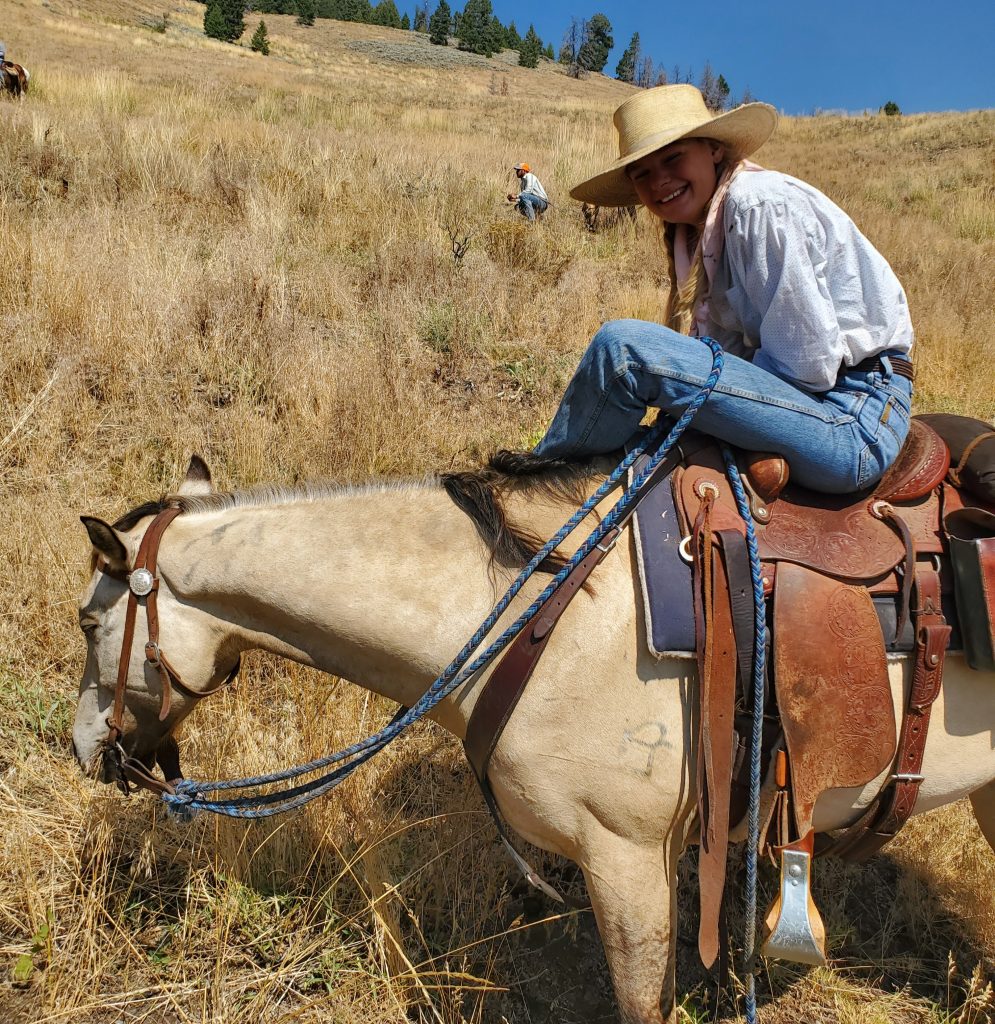
I think we have little understanding of what land used to look like and what is capable of becoming. Caryl, my botanist wife, said all the literature suggests that Great Basin wildrye is found on old floodplains and swales, and in our country was more common than now, but limited in area. While we see wildrye in those typical habitats, after just 15 years of regenerative grazing on the Hat Creek range, we are finding it in places that surprise us, like the burn. Caryl now thinks that our valley had huge stands of Great Basin wildrye, stretching to fill much of the valley bottom as it slopes to the abrupt foothills. There would have been little bare ground. Now, there plant cover is less than 40%, and is comprised mostly of Wyoming sagebrush, and a short sparse native bunch grass, Sandberg’s bluegrass. No wonder this valley could support so many cattle, at least for a little while.
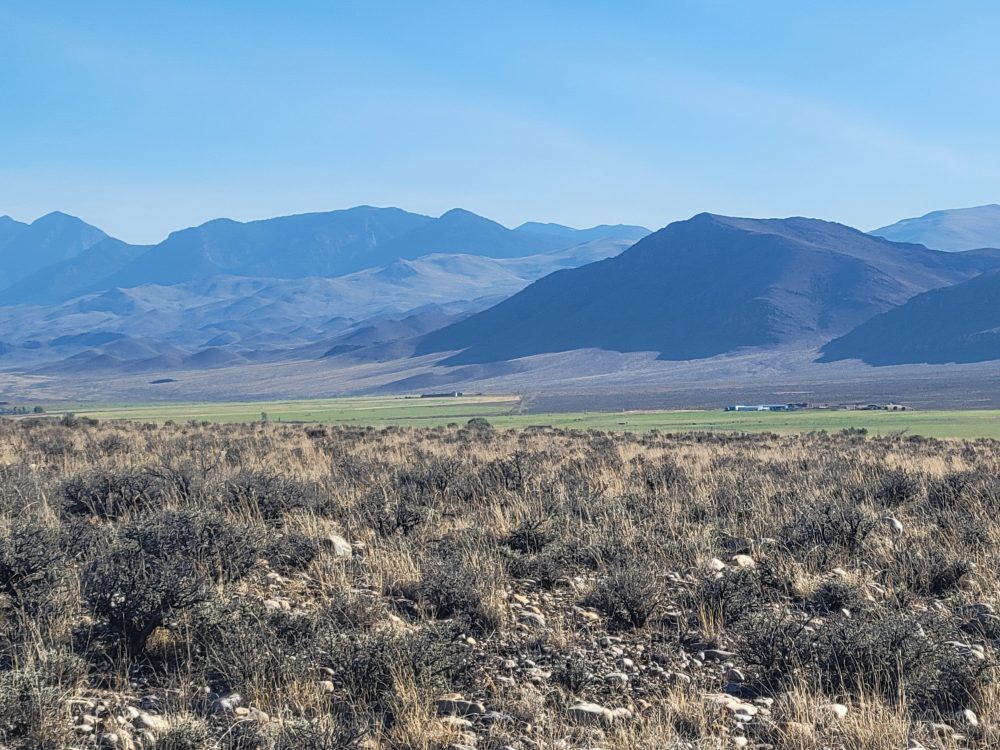
So often, we think regeneration, restoration of ecosystems is so far out of reach. But nature has it all in hand, generations after we humans screwed it up. Even if it was by mistake, we nearly extirpated this majestic grass of the West.
And then nature came along. And says, “There’s still hope. I got the seeds.”
These seeds were already planted for a time when the winds of change would blow. Change happened first when fire removed sagebrush canopy competition. Then, continuous grazing finally stopped when wolves taught us to run our cattle like the ancient herds of bison.
May golden waves of wildrye undulate across the hills again. It’s possible. And we can help make it happen.
Happy Trails.

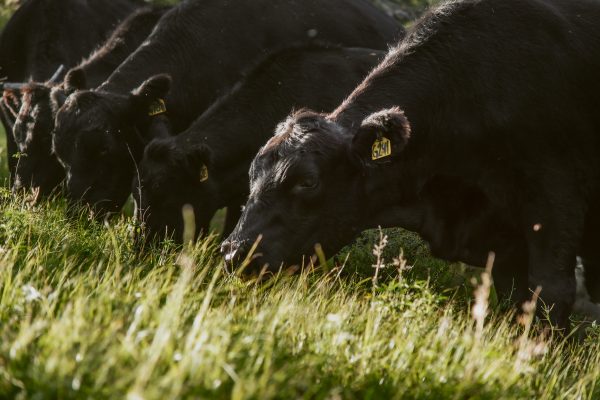

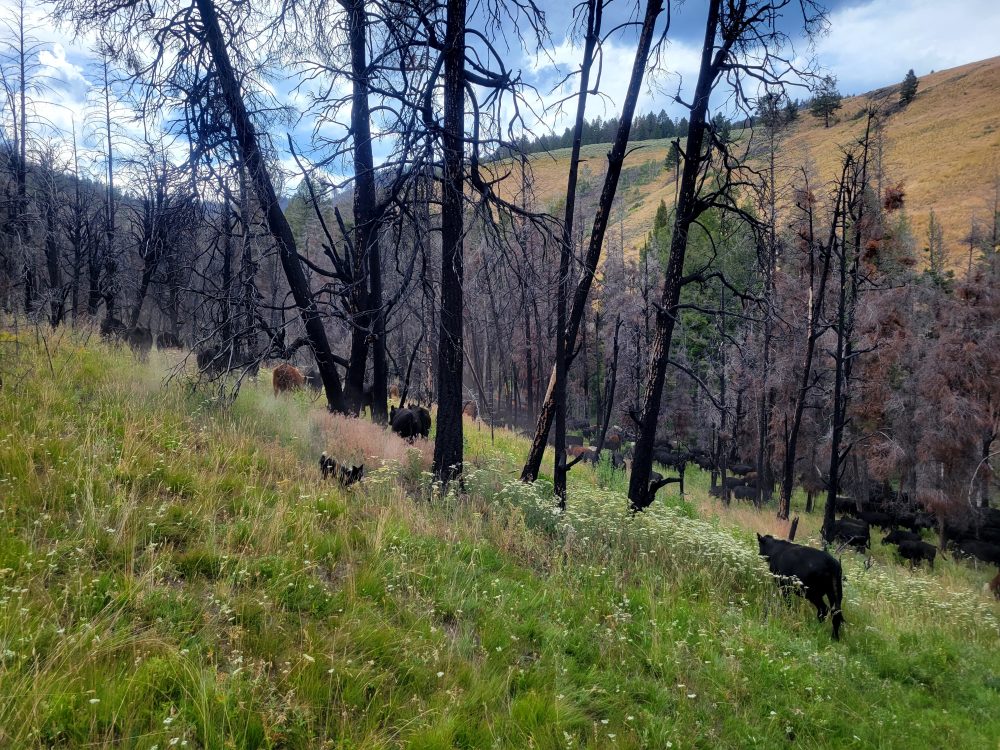


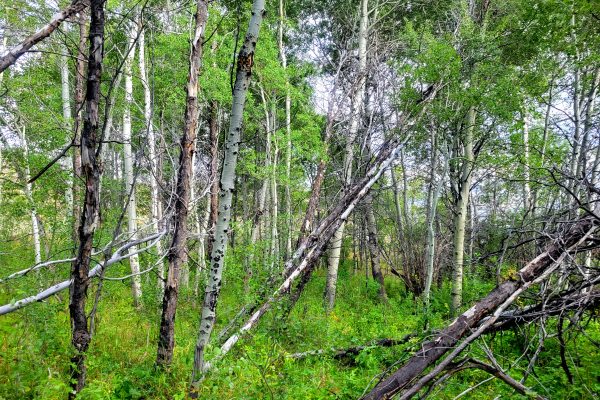
Doug
Thanks.
How about thinking of creating an inclusion zone, and seeing what grows up with native seeds.
Like what u doing with couple acre rye grass.
Maybe a bare soil area fenced off one acre.
Cattle placed there with hay for say…?day 3 nights and days then removed.
Leave zone fenced off to see what will grow after winter and rains.
Natural seed hidden in soil and any seed deposited through dunging.
You will know the seed from cattle, and other grass species that may grow, will have been left in soil long ago…. ( by god and nature)
Best regards
Deb Olsen
As always another great read that transports my mind back generations and back to the present, I love the way you write with such passion and education. So glad God has placed you and Caryl where you need to be reinventing the great grasslands of the past for the future of generations to come.
Cindy Salo
Glenn,
Thanks for this discussion of growing points and careful grazing. Another thing I mull over is the role of beavers: how much more grass was there when the valley bottoms were soaking wet from the water held back by the beaver dams? Wow! Wouldn’t that have been something to see?! (I’d sure hate to have to walk through it, though–squish, squish, slip, squish, slip, splash.)
Cindy